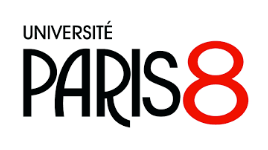16h30
Pouchet, 59 rue Pouchet, 75017, salle de conférences (accès/ map) & zoom
https://cnrs.zoom.us/j/93545584654?pwd=bOSsGhR17egSvIAeK3QdGZVr6zqb1r.1
Meeting ID: 935 4558 4654 Passcode: Z7FNp6
retour Séminaire Syntaxe et Sémantique
Workshop Grammaticalizations of GIVE
Conférence invitée / invited speaker
Hilary Chappell (EHESS-CRLAO, Paris)
GIVE and « GET to GIVE » in Sinitic languages
Programme
| Lundi 2 déc 2024/ Monday 2 Dec 2024 | |
| 9h00-9h30 | Bienvenue & café / Welcome & coffee |
| 9h30-11h00 | Conférence invitée : Hilary Chappell (EHESS-CRLAO, Paris) GIVE and « GET to GIVE » in Sinitic languages |
| 11h-11h15 | Pause café / coffee |
| 11h15-12h15 | Chang LIU (INALCO) Notes on the many faces of GIVE in Mandarin Chinese |
| 12h15-14h | Déjeuner / lunch |
| 14h15-15h15 | Adrien Dadone (UMR 7023 - SFL, Paris 8 & CNRS) Causative-GIVE in LSF and French: a case of cross-linguistically non-uniform grammaticalization |
| 15h15-15h50 | Elena Soare (UMR 7023 - SFL, Paris 8 & CNRS) GIVE and PUT supine causatives in Romanian |
| 15h50-16h30 | Patricia Cabredo Hofherr (UMR 7023 - SFL, Paris 8 & CNRS) Recipient and benefactive GIVE in Haitian and Martiniké |
Abstract
GIVE and « GET to GIVE » in Sinitic languages »
Hilary Chappell EHESS-CRLAO, Paris
Crosslinguistic studies have clearly demonstrated that GIVE verbs are highly polyfunctional in many languages of the world, as demonstrated in several works by Newman (1996), (1998) and Malchukov et al (eds.)(2012) ; or more specifically for Southeast Asia by Lord et al (2002), and Jenny (2012).
For Southeast Asia, at least three main pathways are typically described :
(i) GIVE > dative/benefactive preposition
(ii) GIVE > permissive causative verb
(iii) GIVE > purposive conjunction ‘so that’
In this talk, major clusters of constructions in Sinitic languages manifested by polyfunctional GIVE verbs are discussed and modelled in the form of a radial diagram to capture the currently attested semantic shifts and reanalysis which leads to new construction types and functions. In China, Central and Southern Sinitic languages, in particular, are richly endowed when it comes to the semantic field of GIVE. They attest to over a dozen sources in terms of unrelated and phonetically distinct lexemes. Curiously, this field also includes lexemes identical with GET verbs from the same language.
After outlining the main grammaticalized functions of GIVE in Sinitic, an important focus is accorded to the interaction of GIVE and GET. GET, like GIVE, shows regular patterns of polysemy across the world (Kuteva et al 2019, Enfield 2001). In certain linguistic areas within China, and in specific construction types, GET transforms into GIVE as part of its polysemy chaining. Put more succinctly, GET verbs can be the source of GIVE verbs, which subsquently feed into the same set of pathways for GIVE. We argue that the intertwining of GET and GIVE polysemy appears to be largely confined to the area of Central Sinitic languages (Chappell 2017) as one of its identifying features.
REFERENCES:
Chappell, Hilary. 2017. Languages of China in their East and South-East Asian context. In Raymond Hickey (ed). The Cambridge Handbook of Areal Linguistics. Cambridge: Cambridge University Press, 196-214.
Enfield, N. J. 2001. Polyfunctionality in Mainland South-East Asia: Parallel polyfunctionality of ‘acquire’. In: Alexandra Aikhenvald & R.M.W. Dixon (eds.) Areal diffusion and genetic inheritance: problems in comparative linguistics. Oxford: Oxford University Press, 255-290.
Jenny, Mathias. 2015. The Far West of Southeast Asia: ‘Give’ and ‘get’ in the languages of Myanmar. In N.J. Enfield & Bernard Comrie (eds) Languages of Mainland Southeast Asia. Berlin: De Gruyter Mouton, 155-208.
Kuteva, Tania, Bernd Heine, Bo Hong, Haiping Long, Heiko Narrog & Seongha Rhee. 2019. World Lexicon of Grammaticalization. 2nd Edition. Cambridge: Cambridge University Press.
Lord, Carol, Foong Ha Yap and Shoichi Iwasaki. 2002. Grammaticalization of ‘give’: African Asian perspectives. In Ilse Wischer and Gabriele Diewald (eds.) New reflections on grammaticalization. Amsterdam: John Benjamins.
Malchukov, Andrej, Martin Haspelmath & Bernard Comrie, eds. 2010. Studies in ditransitive constructions. A Comparative Handbook. Berlin, New York: De Gruyter Mouton.
Newman, John. 1996. Give: a cognitive linguistic study. Berlin: Mouton de Gruyter.
Newman, John (ed.). 1998. The linguistics of giving. Amsterdam/Philadelphia: John Benjamins.
Organisation : P. Cabredo Hofherr (UMR 7023 -SFL), Chang Liu (INALCO) & Aïcha Ben Rhouma (UMR 7023 -SFL)
Soutien financier / Sponsors : Nous remercions
• le laboratoire Structures formelles du langage (UMR 7023 - SFL CNRS & U. Paris 8)
• l'IRN TypMod Typology across modalities



